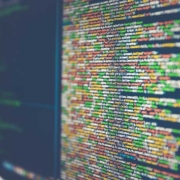Choosing the Right Printing Technology
The choice of the right printing technology is crucial in the area of bringing creativity to life through print. With a variety of printing techniques available, each offering unique benefits, it is crucial to set out on a path that is in line with the needs of your particular project.
1. Digital Printing: Precision Meets Versatility
Precision and versatility are seamlessly merged in digital printing, which is transforming the printing industry. This cutting-edge technique, which uses procedures that directly transfer ink onto the paper and produce exceptionally high-quality images, is particularly noteworthy for short print runs. Digital printing is more affordable for smaller runs, which makes it the best option for situations involving personalized materials and on-demand printing.
2. Offset Printing: Unparalleled Quality for Extensive Runs
Offset printing is king when it comes to large print runs. This age-old method entails building intricate print plates that transfer ink onto a rubber “blanket” before leaving an everlasting imprint on the finished product. Offset printing is a more preferable option for jobs like business cards, brochures, and other marketing materials where quality is crucial because, despite having higher setup costs, its per-unit cost drops significantly with higher quantities.
3. Screen Printing: A Burst of Vibrancy on Varied Materials
Screen printing stands out as a fantastic choice for those looking for a riot of vivid colors on a variety of materials. With this technique, ink is transferred to the printing surface using a mesh screen, producing prints that are long-lasting and of high quality. Screen printing, which is renowned for its prowess in apparel printing, is also skilled at producing eye-catching posters and promotional items.
4. Tailoring Your Choice to Project Needs
What matters most when deciding which printing technique to use is the particular specifications of your project. Digital printing’s agility excels when quick turnarounds for small runs are required. On the other hand, offset printing triumphs as the heavyweight champion when quantity and unwavering quality are priorities. Screen printing offers unmatched versatility for projects requiring a kaleidoscope of colors on various surfaces, making it the go-to for distinctive promotional materials.
5. Quality Images: The Precision of Digital Printing
Digital printing is the only option when achieving high-quality images with minute details is the main goal of your project. This technique excels at accurately reproducing intricate designs, making it particularly suitable for materials like business cards where a polished appearance is imperative.
6. Cost-Effective Options: Balancing Quality and Budget
Digital printing frequently turns out to be the more affordable option for people trying to strike a delicate balance between quality and price considerations, especially for small print runs. But as the quantity grows, the economics change, and offset printing turns out to be the more cost-effective choice because the price per unit is lower.
7. Transfer of Ink: Understanding Mechanisms
A crucial factor to think about is the method by which ink is transferred. Direct ink transfer onto the paper is a feature of digital printing, guaranteeing a quick and easy procedure. Offset printing, in contrast, uses print plates in a middle step. This distinction affects the overall cost and effectiveness of the printing process in addition to the final product’s quality.
8. Materials Variety: Screen Printing’s Versatility
Screen printing stands out for its unrivaled versatility if your project involves the printing on various materials, especially unusual surfaces like fabric or metal. With this technique, you can transfer ink to almost any material, enhancing your creative options and enabling you to play around with a variety of surfaces.
9. High-Quality and Precision: The Legacy of Offset Printing
Offset printing has a long history when the goal is the highest quality and accuracy, especially for large print runs. Print plates are the preferred option for impactful marketing materials where quality is of utmost importance because the meticulous process of creating them ensures consistency across each print.
10. Conclusion: Tailoring Your Approach
In conclusion, there is no one printing technology that works for everyone. It’s a complex choice that depends on the particular scope, spending limit, and desired qualities of the finished product of your project. Each printing technique has its own advantages, whether it be the slick professionalism of digital printing, the unmatched quality of offset printing, or the vibrant versatility of screen printing.
Think about the priorities and particular needs of your project. Are you looking for quick, detailed prints of the highest caliber? Digital printing will then be your ally. Managing large quantities while aiming for the highest level of accuracy? The best printing method is offset. If your project calls for vivid colors on various surfaces, especially unusual ones, screen printing offers an almost limitless range of options.
Understanding the nuances of selecting the appropriate printing technology ensures that your ideas are elevated to the highest standards of visual appeal and effectiveness rather than simply being translated onto paper. Keep yourself in the driver’s seat, stay educated, and let your preferred printing technology bring your imaginative visions to life.




Trackbacks & Pingbacks
[…] Choosing the Right Printing Technology | I-Print […]
Leave a Reply
Want to join the discussion?Feel free to contribute!